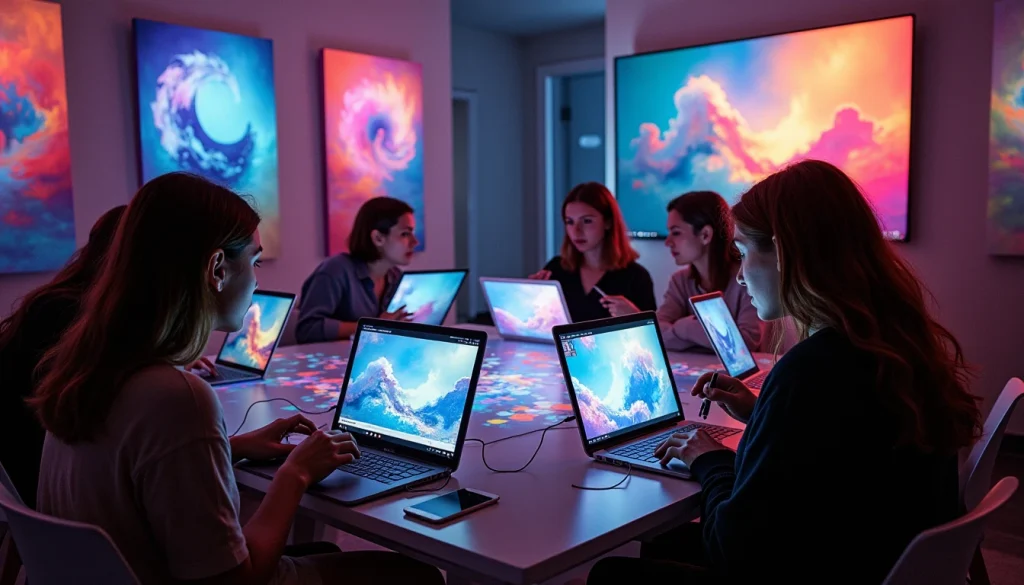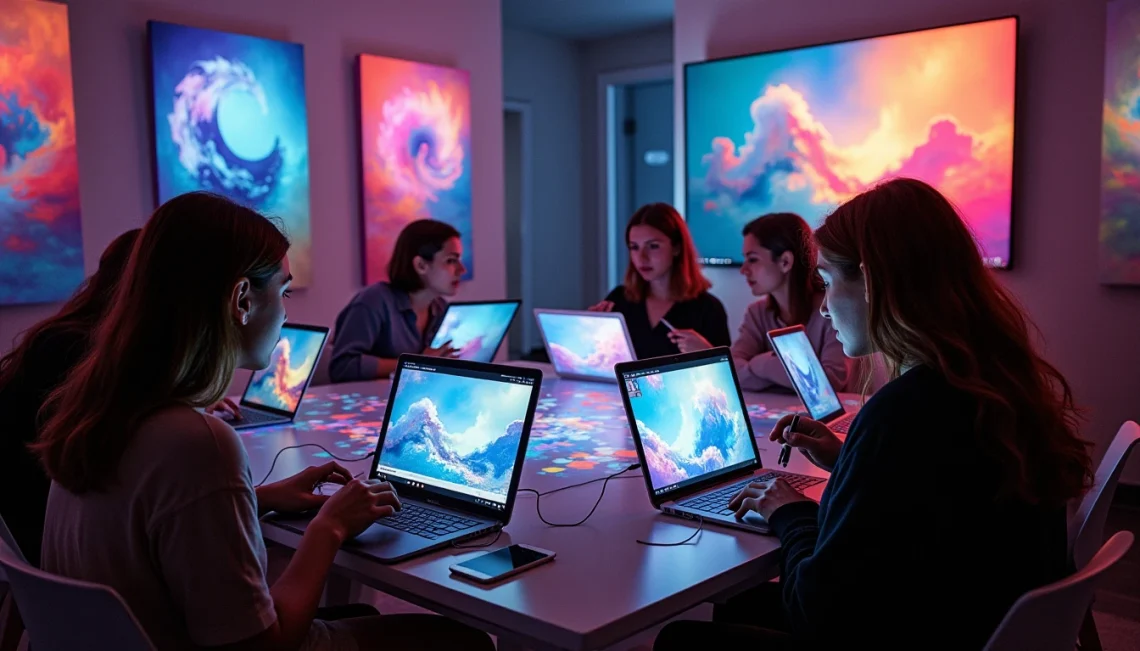Digital art has undergone a transformative journey over the past decade, reshaping creative processes across various mediums. This evolution is not just about new tools but a paradigm shift in how artists engage with their craft, blending tradition with innovation.
The Shift to Digital Platforms
The transition from physical brushes to digital strokes marked a revolutionary era in artistry. Tools like Adobe’s suite and Corel Painter bridged the gap between traditional techniques and modern software. Artists now wield tablets and styluses as extensions of their hands, replicating textures with precision. This shift democratized access; no longer confined to physical studios, artists can create from anywhere, redefining spatial boundaries.
Digital platforms have also introduced dynamic features like layer masking and undo history, allowing for creative freedom unattainable in traditional mediums. Apps such as Procreate on iPad exemplify this, offering brush dynamics that emulate oil paints or charcoal. This accessibility has lowered entry barriers, inspiring new artists to experiment freely without the financial burden of physical materials.
Moreover, digital tools have enhanced collaboration through cloud-based storage and shared workspaces. Artists can iterate in real-time across continents, fostering global partnerships. This interconnectedness mirrors the collaborative spirit of Renaissance workshops but with 21st-century efficiency, reshaping how art projects are conceptualized and executed.
AI and Machine Learning Integration
The integration of AI into digital tools has expanded creative horizons. Platforms like MidJourney and RunwayML use generative models to transform text prompts into visual masterpieces, democratizing effects once reserved for experts. Artists can now explore surreal landscapes or photorealistic textures with minimal input, blending human intuition with algorithmic precision.
AI-driven tools have also streamlined repetitive tasks, allowing artists to focus on creative expression. Features like automatic retouching in Adobe Lightroom save hours by correcting blemishes or adjusting lighting automatically. This efficiency is a game-changer for professionals juggling deadlines and client expectations, enabling them to deliver high-quality work without sacrificing creativity.
Machine learning extends beyond mere automation; it’s an ally in exploring new aesthetics. AI experiments with neural networks generate abstract patterns that human minds might overlook. These innovations challenge artists to push boundaries, creating hybrids of digital and organic forms—melding the predictable with the unpredictable for fresh artistic dialogues.

Accessibility and Democratization
The rise of user-friendly software has made digital art accessible to a broader audience. Tools like GIMP and Krita offer professional-grade features at no cost, breaking entry barriers. This shift mirrors the open-source movement’s philosophy, democratizing access to advanced functionalities that once required expensive licenses.
Affordable hardware further fuels this inclusivity. Tablets and styluses are now within reach of hobbyists, enabling them to experiment without financial constraints. This accessibility has led to a surge in online space, where artists share tips and collaborate on projects, fostering a global communities.
Digital tools have also bridged cultural gaps by providing platforms for diverse voices. Artists from non-Western contexts can now showcase their work globally through social media, challenging dominant narratives and enriching the art world with varied perspectives. This digital inclusivity is redefining who gets to define contemporary art trends, promoting a more pluralistic aesthetic landscape.
Collaboration and Cloud-Based Solutions
Cloud-based platforms have revolutionized collaboration, allowing global teams to work simultaneously on shared files. Tools like Adobe’s Creative Cloud enable real-time edits, replicating the dynamic interplay of Renaissance workshops but in virtual spaces. This synergy is fostering new creative workflows where feedback loops are instantaneous, accelerating project development.
Collaborative features extend beyond technical aspects; they redefine roles within projects. A team might split tasks, with one artist handling concept art while another focuses on final renders. This division mirrors traditional ateliers but leverages digital tools for seamless integration. It’s about optimizing strengths to achieve a cohesive vision without the logistical challenges of physical collaboration.
Moreover, cloud solutions offer backup and recovery mechanisms, mitigating risks associated with data loss. This reliability is crucial in high-stakes projects like feature films or marketing campaigns, ensuring that creative efforts are safeguarded against technical hiccups.
The Future Trends
The future holds exciting possibilities as digital tools continue evolving. Virtual Reality (VR) is poised to transform art creation by offering immersive environments where artists can interact with their work in three dimensions. Imagine painting a mural that wraps around a virtual room, adjusting perspectives with just a glance—this is the potential of VR.
AI’s role will likely expand into curatorial and critique functions. Algorithms might analyze past projects to suggest improvements or identify emerging trends, acting as a digital mentor. This could lead to more data-driven creative decisions, blending analytics with intuition for nuanced results.
Looking ahead, the integration of blockchain technology in NFTs is reshaping art ownership. Digital works can be authenticated and sold directly without intermediaries, giving artists greater control over their revenue streams. This shift could redefine traditional gallery models, creating new avenues for monetization and recognition.
In conclusion, the evolution of digital art tools reflects a broader cultural shift towards accessibility and innovation. As technology advances, it’s essential to leverage these tools thoughtfully, ensuring that they enhance rather than replace human creativity. The interplay between tradition and modernity in this digital age is not just about new mediums but redefining what art can be—a dynamic, ever-evolving conversation where each stroke tells a story of progress and possibility.



